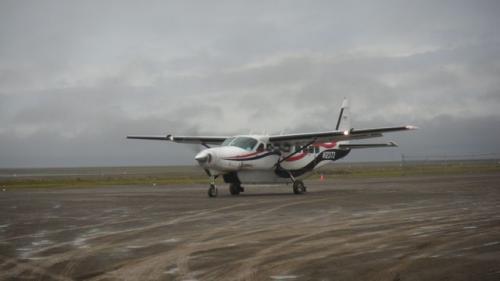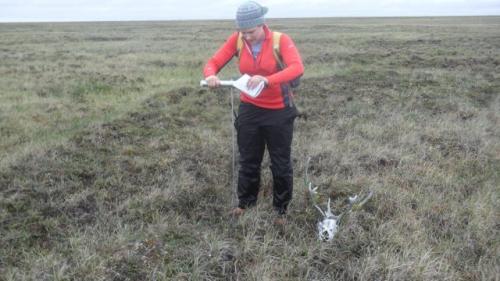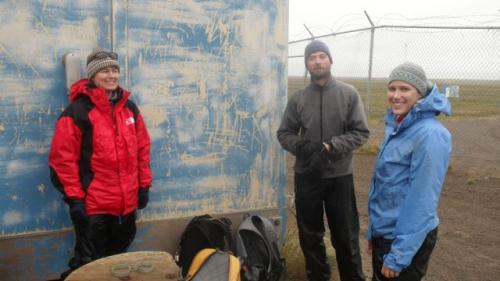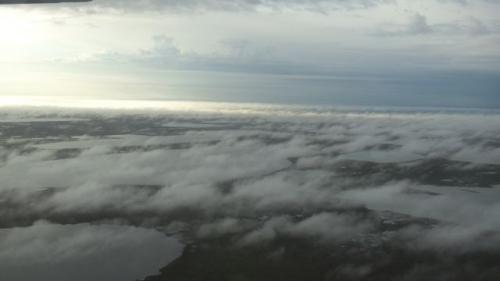While the Haul Road connects Prudhoe Bay to the rest of the state, the vast majority of towns in the North Slope Borough of Alaska are not accessible by road. So when our field site required us to trek out near the small village of Atqasuk, we were required to fly the short 60 miles from Barrow.

Several trucks and four-wheelers – a healthy showing of the 250-person city – arrive at the Atqasuk Airstrip to help haul supplies at every aircraft landing. We were graciously offered a ride into town once we touched down, but declined, seeing that our site lay about a mile into the tundra. The ground was particularly wet as we probed thaw depths, and a drizzle kept things soggy all morning. As one of the most remote field sites yet, several well-preserved caribou skulls and antlers could be found throughout our one square kilometer grid. Heavy clouds made us wary of any grizzly bears that might have been lurking on the horizon, but we completed our measurements without incident.

Back at the airstrip we waited for our plane’s arrival. Without any way to determine if our pilot would arrive on time, we were required to remain on look-out amidst the elements. The side of a utility shed was the closest the Atqasuk Airstrip has to a waiting area. When a fleet of trucks began arriving at the runway, once again, we knew our plane had to be close. Sure enough, after a chilly two hour wait, we were on our way back to Barrow.

Dinner conversation - sparked by the spicy Thai cuisine at a local restaurant - revealed that our own Dr. 'Fritz' Nelson had written a paper describing a scientific application of spicy foods. If you remember from last week, several pieces of our equipment were found damaged or destroyed by arctic animals. Fritz hypothesized that if he were to coat the equipment with a hot sauce such as Tabasco, far fewer animals would come nibbling. His and other researchers’ application of this idea proved just that: animals can’t stand the heat! So next time your garden, trash, or utility wires appear they are being eaten, consider a little Cajun seasoning…

More from Barrow tomorrow,
Josh
Question for Students
As you discussed in class today, August finds New Orleans in the heart of hurricane season. By now, you know that hurricanes cannot form in the Arctic because they require warm water, such as that found in the Gulf of Mexico. Barrow is, however, a coastal city, with its own environmental concerns and hazards. As we remain cautious every hurricane season along the Gulf Coast, what weather-related concerns might residents of Barrow be mindful of year after year?
Weather in Barrow
High: 46 degrees F
Low: 34 degrees F
Precipitation: 0.01 inches
Sunrise: 5:21 AM
Sunset: 11:33 PM
% Humidity: 100


Comments